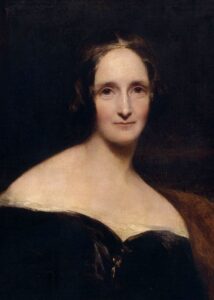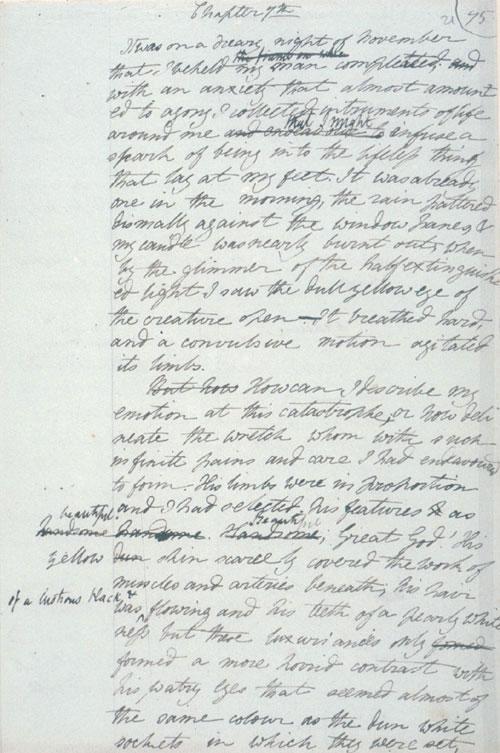Is Frankenstein a true story? Fact or Fiction
Frankenstein is a famous novel written by Mary Shelley and published in 1818. It is a work of fiction and therefore not a true story. However, some of the inspiration for the story does come from real-life events!
The Real Story
The story of Frankenstein is well known and has become a staple of pop culture. To quickly summarize: Dr. Frankenstein devised a way to create life and succeeds in creating his monster.
The monster is a huge, rather grotesque-looking creature that resembles a human to some degree, and spends his life lonely and angry, wishing he had a companion like himself with which to spend his time.
There is murder, grief, fear, and terror abound in the novel.
As one of the most famous science fiction tales of all time, Frankenstein has captivated readers and viewers (for those who have seen an adaption of the original novel) for over 200 years!
But within science fiction lies some real scientific underpinnings.
Real Science Behind Frankenstein

Mary Shelley herself referred to galvanism as an inspiration behind Frankenstein. But just what is galvanism?
In the late 1700s, a scientist by the name of Luigi Galvani realized that if he passed an electrical current through the nerves of a deceased frog, he could make the frog’s legs kick and twitch.
At this point in history, the concept of electricity was still very new, and our understanding of it was nowhere near where it is today (not to mention that our understanding of medicine itself could be considered almost primitive at that time).
It is thus unsurprising that the ability to stimulate a dead organism’s body and obtain responses from it would lead to many new ideas about life, death, and re-animation.
In fact, this went even further, with others conducting their own experiments. Galvani’s nephew, Giovanni Aldini, traveled throughout Europe demonstrating the effect his uncle had initially shown in frogs.
Aldini, however, expanded his roster of subjects, using deceased animals like oxen, dogs, and sheep. Due to a law enabling executed criminals to be used for research purposes, he even displayed the effect of electricity on a recently executed human!
Part of Aldini’s motivation in creating a spectacle for viewers was in the attempt to prove Galvani correct, as others, primarily Alessandro Volta, an Italian physicist, had countered that the electricity was not a property of the animal’s tissue but rather simply due to the metals contacting each other when initiating the shock. It was later discovered that both were somewhat correct.
Nevertheless, this discovery led to curiosity about the distinction between life and death and whether electricity was a key to the puzzle, and Mary Shelley happened to be familiar with these experiments and their results, leading her to suggest the reanimation of a corpse via electricity when prompted to create a ghost story.
Mary Shelley’s Connection to Science
Mary Shelley was the daughter of two intellectuals: Mary Wollstonecraft (feminist philosopher, writer, and teacher) and William Godwin (philosopher, journalist, and novelist).
Although her mother sadly died shortly after she was born, her father raised her with an emphasis on learning, and she was exposed to many great thinkers of her time.
During her teenage years, she met Percy Shelley, a poet, and philosopher with who she would later marry and have children. Together they traveled and she was further exposed to more scientific and philosophical ideas of the time.
In the summer of 1816, Mary, Percy, their son, and Mary’s stepsister went to Geneva to spend time with Lord Byron, a poet. Byron’s physician was also there, and the group spent much of their time writing, talking, and boating on the lake.
This is when the story of Frankenstein is conceived. During some of their summer, the rain was relentless, forcing them all to stay indoors.
The group decided to tell ghost stories for entertainment, which led to Lord Byron proposing each person come up with their own ghost story.
Initially, Mary struggled to come up with anything. She recalled later this being an embarrassment. But one fateful night, the group engaged in a discussion about life and what exactly it is, prompting Mary to talk about the idea of a corpse coming back to life, referring to galvanism hinting at such a possibility.
She knew about galvanism, perhaps because her and Percy’s own physician, Dr. William Lawrence, had in 1814 engaged in a debate about electricity and life with Dr. John Abernathy.
Dr. Abernathy claimed that electricity served as the vital force in life, while Dr. Lawrence countered there was no such vital source and it was not necessary for life.
Mary, as it seems, was influenced (at least for her work of fiction) by the notion that there was a vital force and it could be induced by harnessing the power of electricity.
The Intersection of Science and Science Fiction
As can be gleaned from the above sections, Mary Shelley took something that was the subject of actual scientific debate in her time as a catalyst for her fictional story. Below is a draft page from the Frankenstein story.

While in reality, Aldini and colleagues never managed to reanimate a corpse or create life from nothing, they did manage to induce movement in the deceased and create a host of questions about the nature of life and death in the physical body.
Today, it might seem obvious her work is fictional, but in the 1800s, the work was a reflection of galvanism and the actual scientific findings of the time.
This is not to suggest that readers believed Frankenstein was a true story, but that it was a relevant work in that time period that could encourage readers to contemplate the real science and its possibilities further.
Overall, while fictional, the story has its basis in fact. Galvanism is no longer practiced in the same way today (similar studies on organisms are now called electrophysiology) and it is not the consensus that electrical therapies can cure multiple illnesses.
However, electroconvulsive therapy, also known as shock therapy, remains a rare but still used treatment today.
The story of Frankenstein is one that has been passed down for generations, with some people believing it to be a true story and others thinking of it as nothing more than fiction.
But what is the real story behind Frankenstein? Is Mary Shelley’s novel based on a true event, or is it simply her own imagination at work? Thanks to new research, we may finally have the answer. It seems that the answer lies somewhere in between – while Shelley’s novel was inspired by actual events, she took artistic license and added her own spin to the story. So, while Frankenstein may not be a true story in the strictest sense of the word, it is still based on real-life events that happened over 200 years ago.


